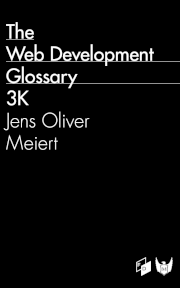Conformance and Accessibility
Published on February 28, 2023, filed under Web Development (RSS feed for all categories).
The Web Content Accessibility Guidelines 2.2 are going to obsolete Success Criterion 4.1.1, which had been WCAG’s nod towards conformant HTML output:
In content implemented using markup languages, elements have complete start and end tags, elements are nested according to their specifications, elements do not contain duplicate attributes, and any IDs are unique, except where the specifications allow these features.
The whole story of 4.1.1 is interesting, and Christophe Strobbe gives a great account of its history and the latest development, in The Troublesome Life and Lamentable Death of Success Criterion 4.1.1.
I followed the development with distant interest: While both conformant * and accessible output are pillars of professional frontend development, conformance and accessibility are only loosely connected.
That is, you can write an inaccessible page that is conformant and valid, and a non-conformant and invalid page that is accessible.
Or, as per an old WAI post on Validity and Accessibility, “validity is a good first step towards accessibility,” but “validity does not guarantee accessibility.”
From that angle, it’s understandable that Success Criterion 4.1.1 is being removed. No matter how we (and I most of all) may long for a Web that is based on syntactically and semantically correct HTML, accessibility guidelines are not the right forum to mandate and evangelize conformance †.
In the end, it’s probably also a good thing that this criterion is being removed—for WCAG to focus on accessibility, and to remind us, the field, of conformance, the topic we so greatly neglect. Although we still have a long way to go for a widely accessible Web, we’ve never really started our journey towards a Web that respects the basics of its languages.
* To reiterate, fantasy HTML doesn’t meet a definition of professional work. Therefore, challenging the respective professionalism shouldn’t be surprising: We do the same in other professions, where we expect (even require) their work to meet a certain level of quality, too.
† We need to take this evangelism elsewhere, and we need to make an effort. To paraphrase what I wrote two paragraphs ago, made-up and erroneous markup are killing our craft. It was welcome that WCAG contained this wink at conformance, but we can’t rely on guidelines for other priorities winking at what else is important. Conformance is something we need to tackle at earlier and more fundamental levels, as in training, and perhaps when hiring.
About Me

I’m Jens (long: Jens Oliver Meiert), and I’m a frontend engineering leader and tech author/publisher. I’ve worked as a technical lead for companies like Google and as an engineering manager for companies like Miro, I’m close to W3C and WHATWG, and I write and review books for O’Reilly and Frontend Dogma.
I love trying things, not only in web development (and engineering management), but also in other areas like philosophy. Here on meiert.com I share some of my views and experiences.
If you’d like to do me a favor, interpret charitably (I speak three languages, and they do collide), yet be critical and give feedback for me to fix issues, learn, and improve. Thank you!
Read More
Maybe of interest to you, too:
- Next: Website Optimization Measures, Part XVIII
- Previous: Speed Up Your Org: When to Require Approval
- More under Web Development
- More from 2023
- Most popular posts
Looking for a way to comment? Comments have been disabled, unfortunately.

Get a good look at web development? Try WebGlossary.info—and The Web Development Glossary 3K (2023). With explanations and definitions for thousands of terms of web development, web design, and related fields, building on Wikipedia as well as MDN Web Docs. Available at Apple Books, Kobo, Google Play Books, and Leanpub.
